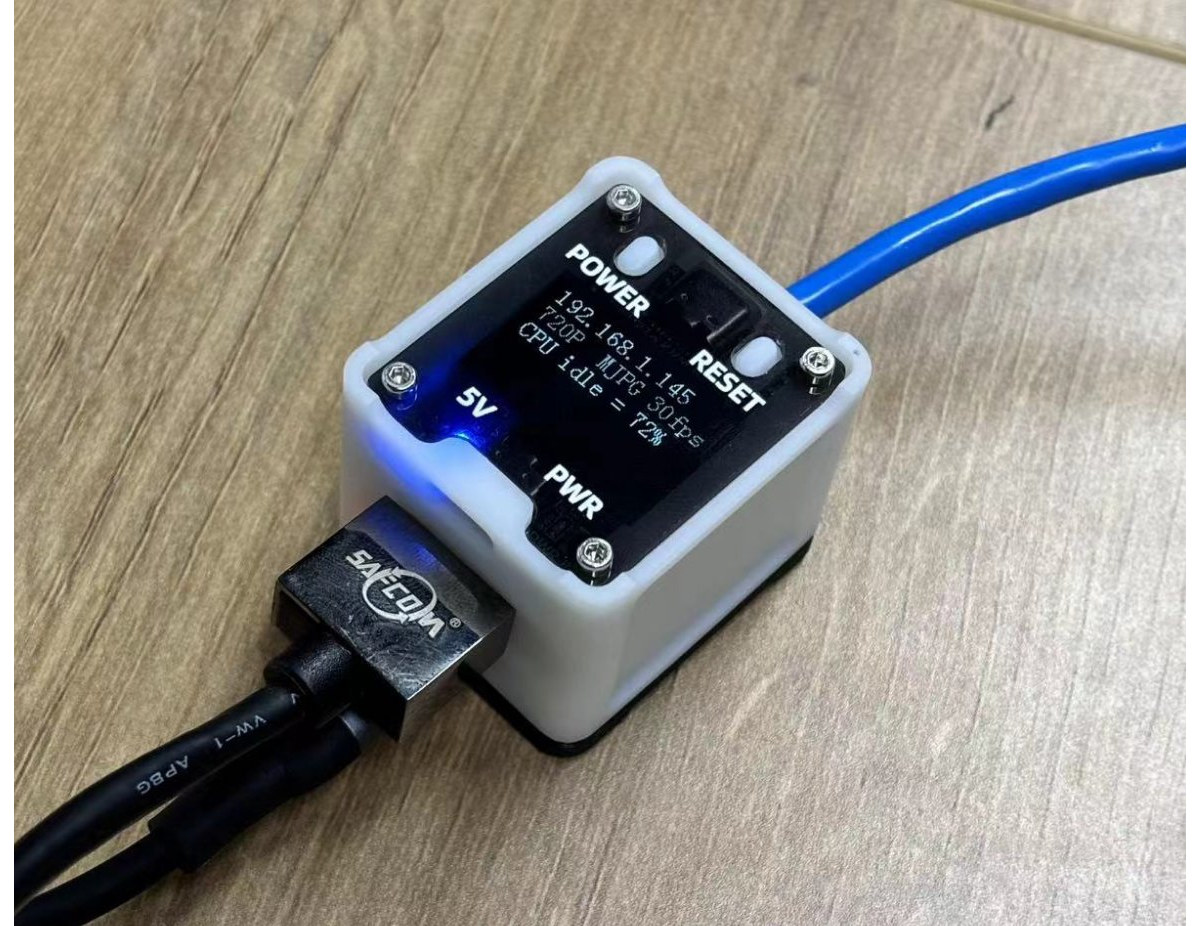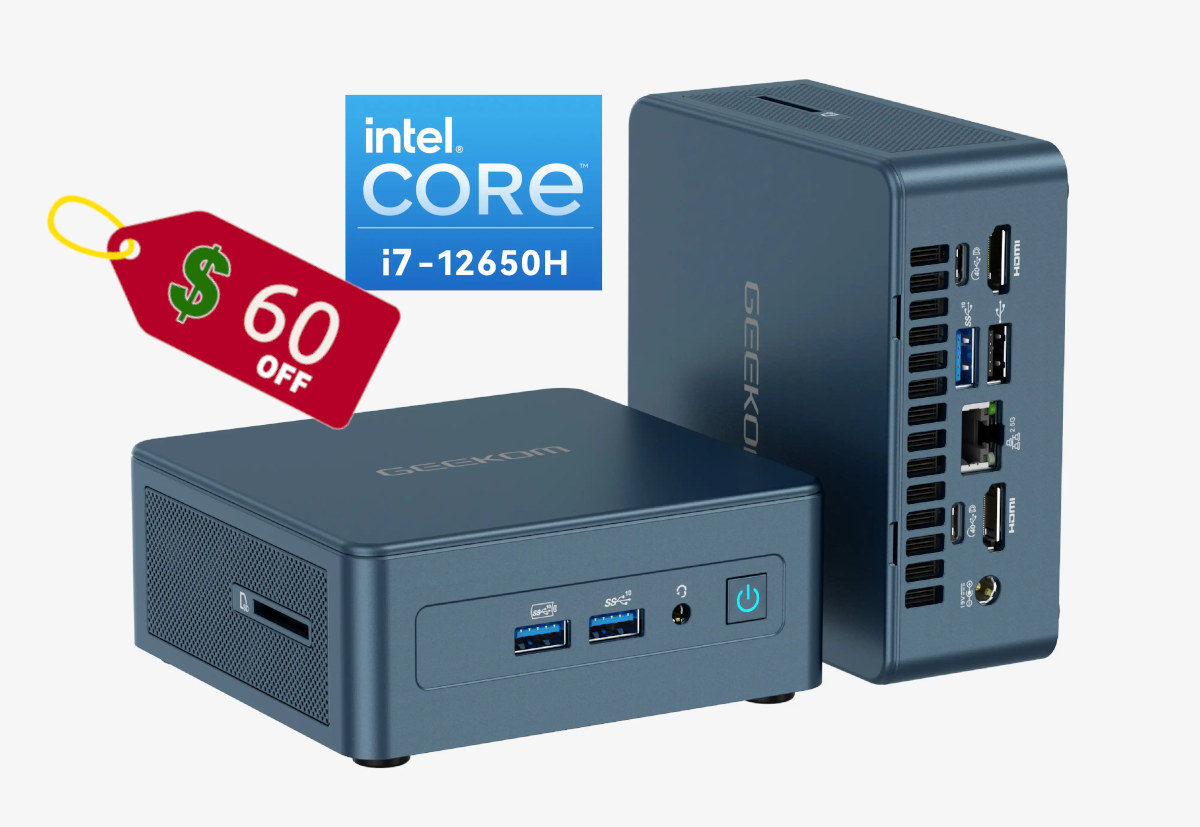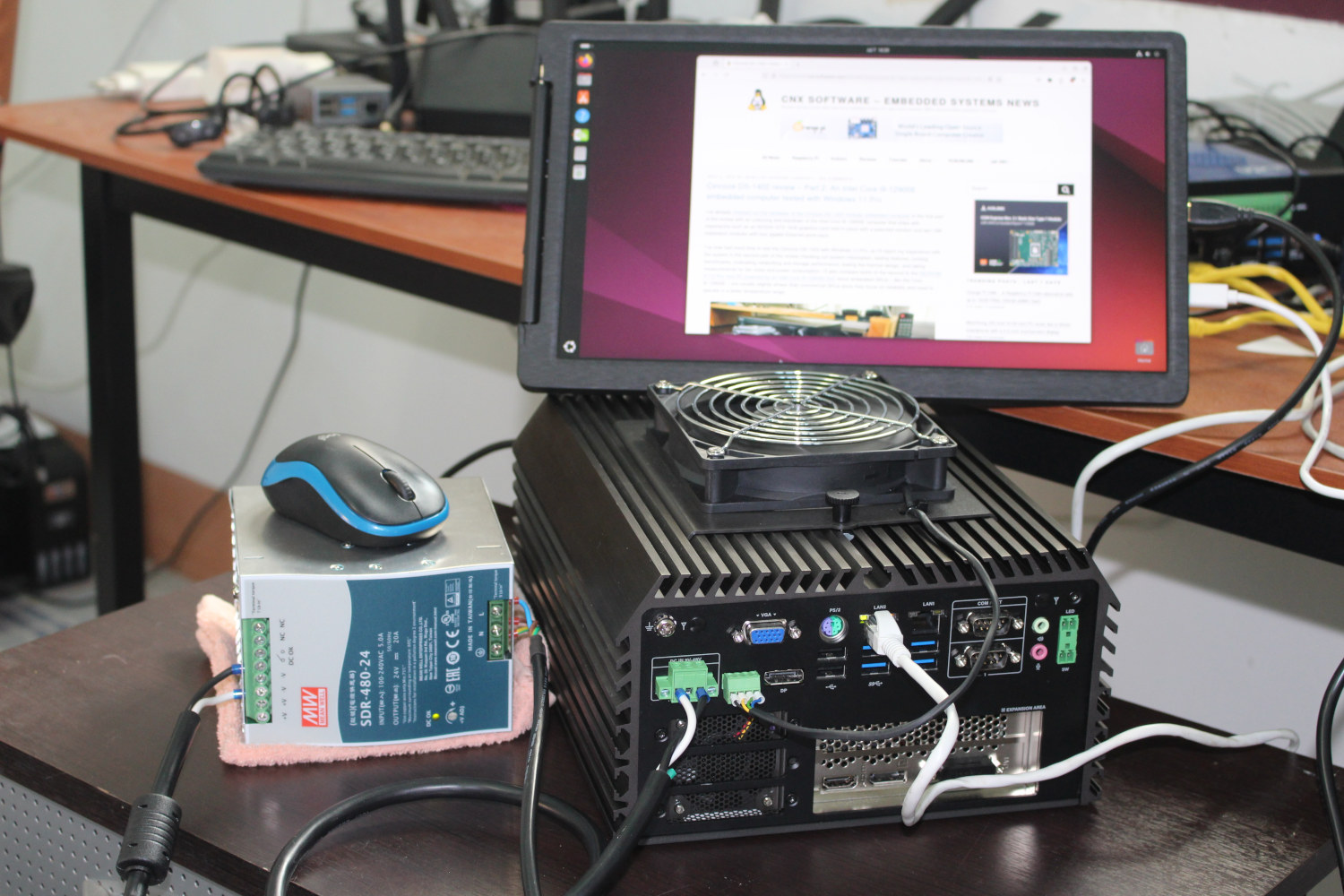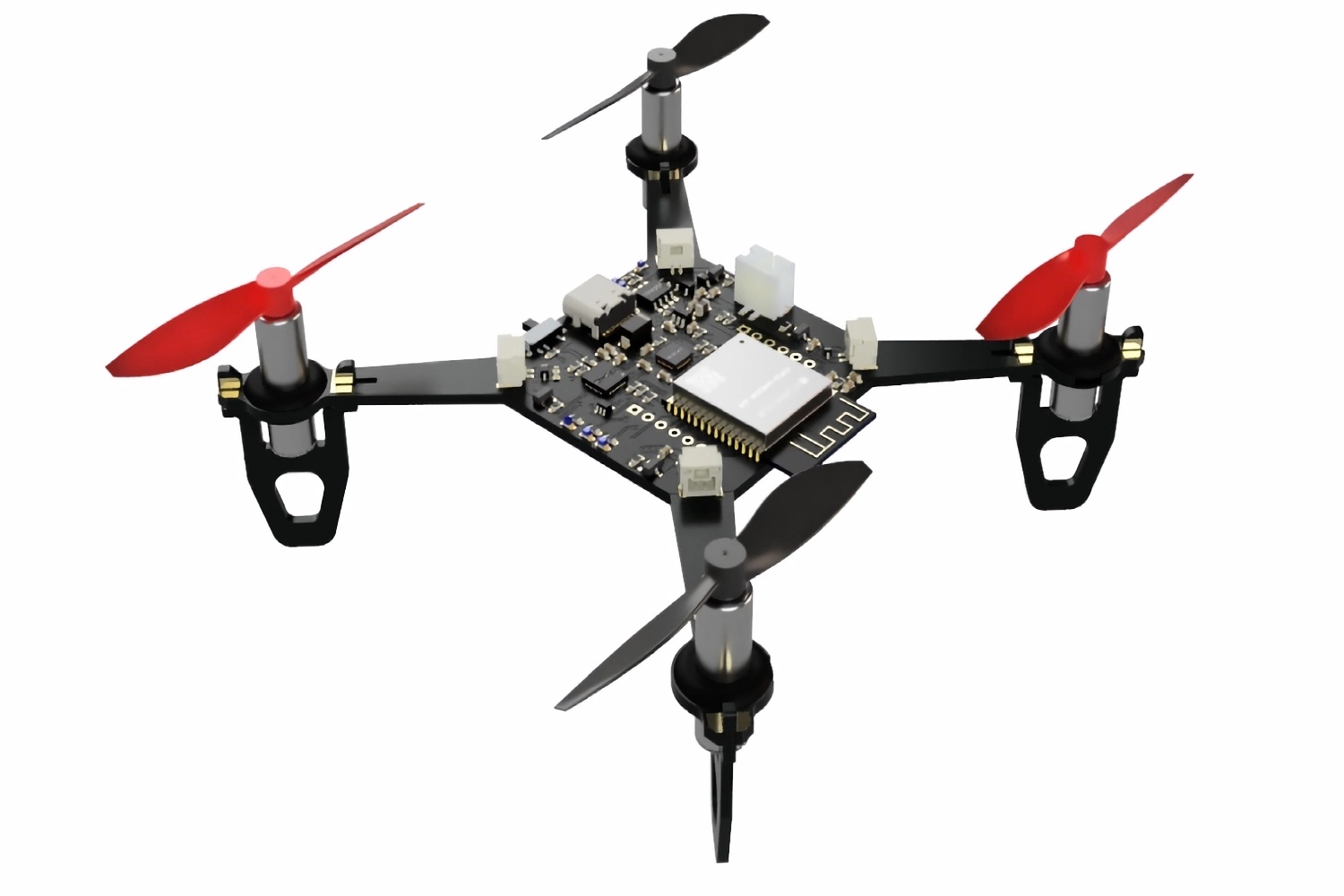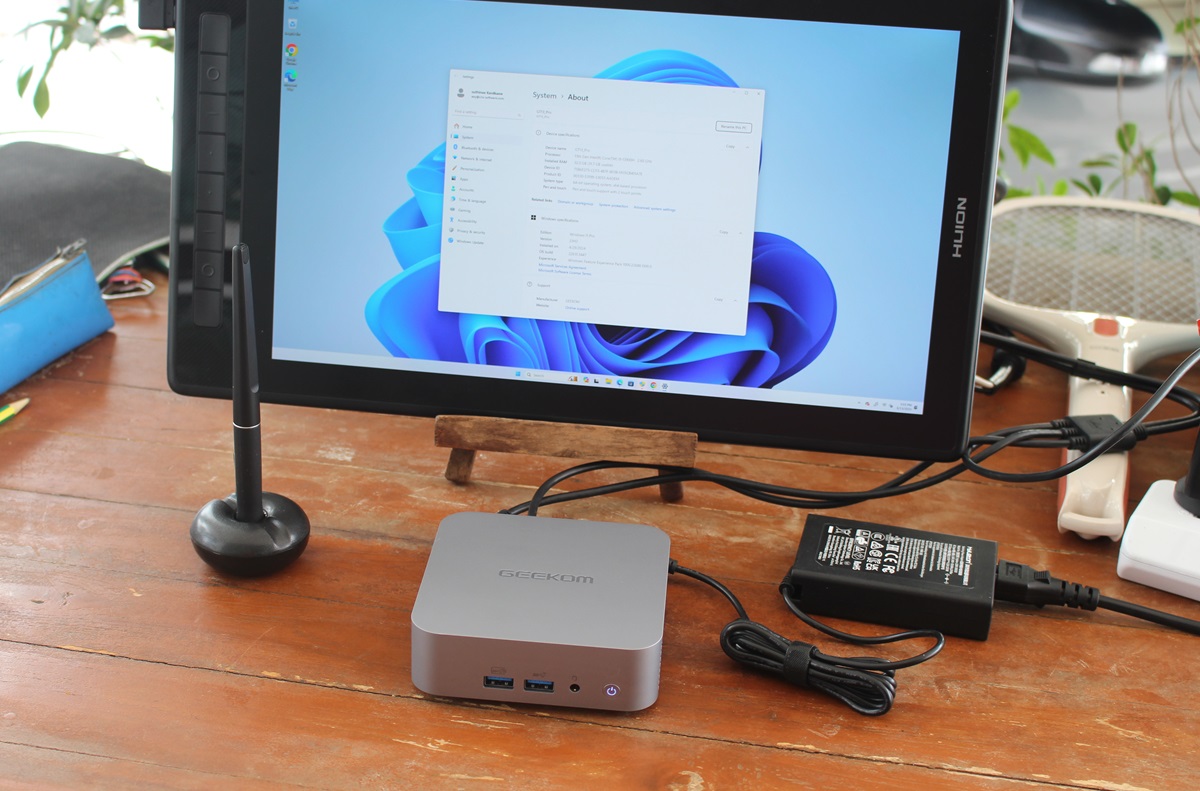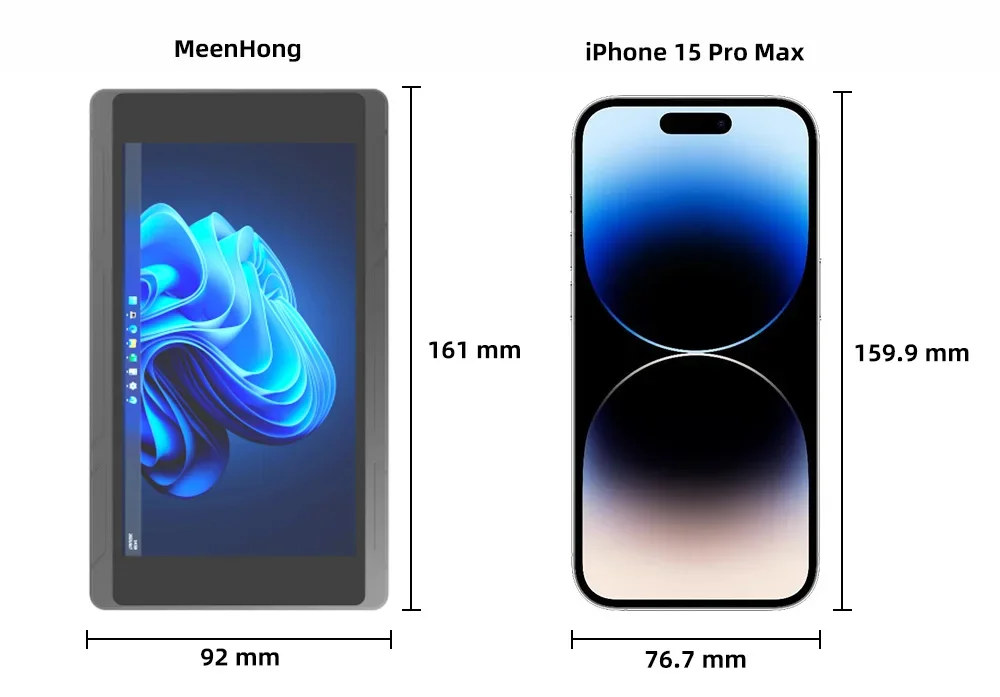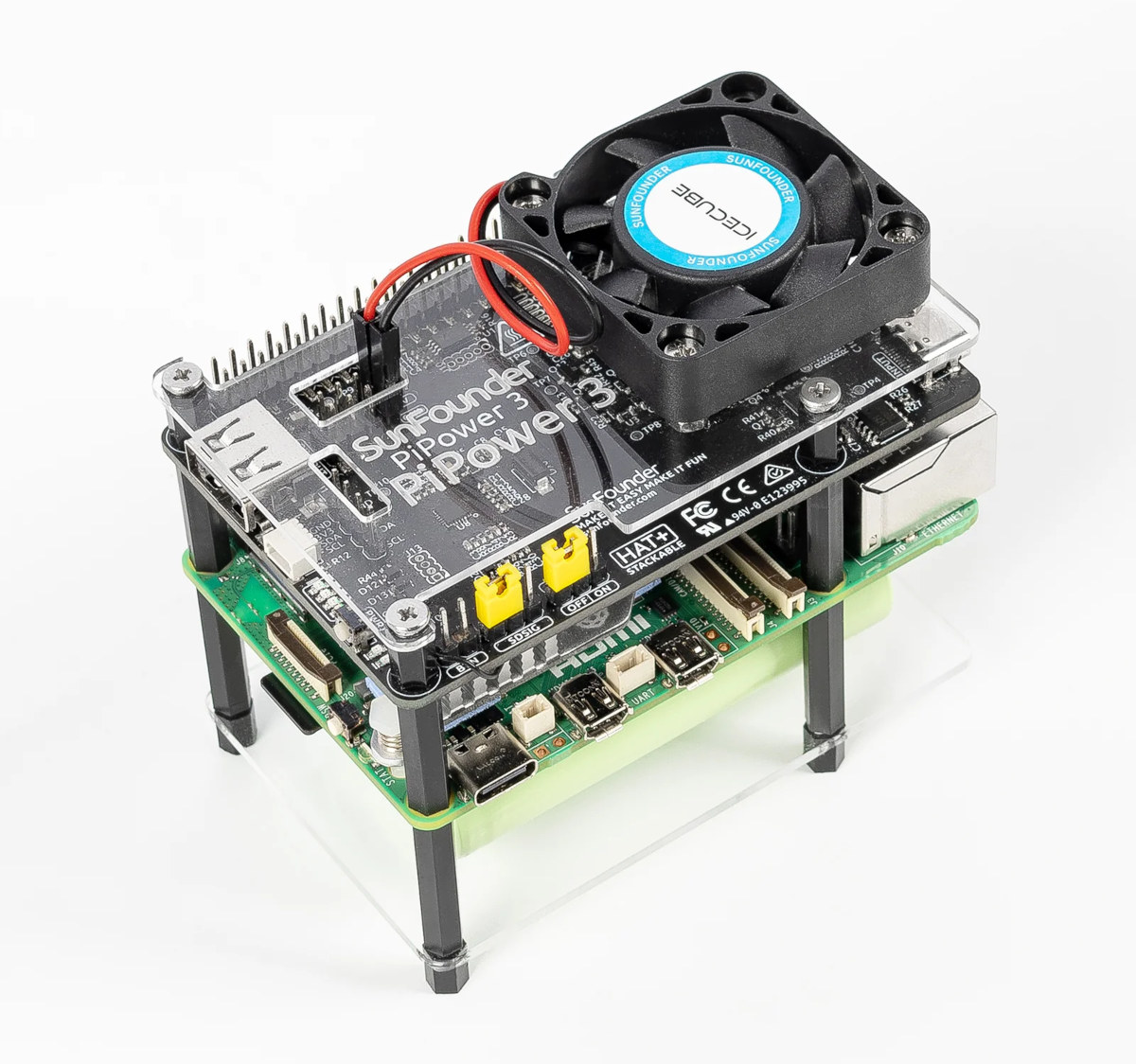Sipeed NanoKVM is a tiny KVM over IP solution based on the Lichee RVNano RISC-V microcontroller board that offers most of the features provided by the popular Raspberry Pi 4-based PiKVM solution allowing users to fully remote control a host such as a computer, server, or SBC down to the BIOS level and power on/off. Two variants are available, namely the NanoKVM Lite and NanoKVM Full. Both support up to 1080p60 displays, virtual USB keyboard and mouse, USB storage emulation, Ethernet with Wake-on-LAN, and IPMI (Intelligent Platform Management Interface) through serial interfaces, but the Full version also adds a resin enclosure, 0.96-inch information display, ATX power control through USB-C port, a microSD card with the firmware, and optional WiFi or PoE support Sipeed NanoKVM specifications: SBC – Sipeed RVNano SoC – SOPHGO SG2002 Main core – 1GHz 64-bit RISC-V C906 or Arm Cortex-A53 core (the latter is likely not used […]
$60 coupon code for the GEEKOM Mini IT12 mini PC with Intel Core i7-12650H, 32GB RAM, 1TB NVMe SSD (Sponsored)
GEEKOM is offering a $60 discount coupon code as part of a Prime Day promotion for the GEEKOM Mini IT12 mini PC powered by an Intel Core i7-12650H 10-core Alder Lake processor and equipped with 32GB DDR4 memory, a 1TB NVMe SSD, and an Intel AX211 WiFI 6E and Bluetooth 5.3 module. US customers can make use of the CNXIT12 $60 off coupon on GEEKOM US to get the mini PC for $489, and British users can also benefit from the same coupon on GEEKOM UK to purchase the mini PC for £489. GEEKOM Mini IT12 specifications: SoC – Intel Core i7-12650H 10-core/16-thread Alder Lake hybrid processor up to 4.70 GHz with 24MB Cache, 64 EU Intel UHD Graphics @ up to 1.4 GHz; PBP: 45W System Memory – 32 GB dual-channel DDR4-3200 via SODIMM sockets upgradeable up to 64GB Storage 1TB M.2 2280 PCIe Gen 4 x4 SSD, expandable […]
Renesas SLG7EVBFORGE FPGA dev board is built around ForgeFPGA SLG47910V low-density FPGA
Renesas SLG7EVBFORGE FPGA dev board, built around SLG47910V is Renesas’ first low-density FPGA in the ForgeFPGA family. The FPGA includes 1120 LUTs, 1120 flip-flops, 5kb of distributed memory, 32kb of block RAM, and a 50 MHz on-chip oscillator with a phase-locked loop (PLL). With robust features, low power consumption, and affordable pricing this FPGA can be used in applications in sensor data aggregation, consumer electronics, and portable computing devices. The SLG47910V FPGA gets connected to a ZIF socket to the development board, this design choice puts out a clear sign that upcoming Forge family FPGAs will support this dev board. Additionally, it features Pmod connectors and configurable power sources. The dev board can be programmed via OTP Non-Volatile Memory or SPI interface and additional features get managed through Renesas’ Go Configure Software Hub. Previously we have written about similar low-power low-cost FPGA boards like the Sipeed Tang Mega 138K, the […]
Cincoze DS-1402 review: Part 3: Ubuntu 24.04 tested on an Intel Core i9-12900E embedded system
In part one of the Cincoze DS-1402 review, I checked out the hardware of the modular rugged computer before testing the Intel Core i9-12900E embedded computer with Windows 11 Pro in the second part, and I’ve now had time to test the Cincoze DS-1402 embedded system with Ubuntu 24.04. I’ve tested most features in Linux, ran some benchmarks, evaluated the gigabit Ethernet performance of some of the ten Ethernet ports, checked CPU temperature under a stress test with and without the fan, measured power consumption, and more. Ubuntu 24.04 system information I installed Ubuntu 24.04 with the official x86_64 ISO in dual boot configuration with Windows 11 Pro. The installation process was smooth, and I have nothing specific to report here. Going to the Settings->About window confirms we have a CINCOZE-DS-1400 system (DS-1402 is part of the DS-1400 family) with a 24-thread 12th Gen Intel Core i9-12900E processor and 64GB […]
SkyByte Mini Wi-Fi-controlled drone runs the open-source ESP32-Drone firmware (Crowdfunding)
The SkyByte Mini is a simple, miniature drone powered by the ESP32-WROOM-32 WiFi and Bluetooth module, and comprised of an MPU6050 inertial measurement unit, coreless motors, and plastic propellers. The Espressif ESP32-WROOM-32 module on the board provides a wireless connection that can be used to control the drone from a mobile app. The printed circuit board uses an “all-in-one” design that removes the need for 3D-printed parts and makes for a more compact final product. The drone’s functionality can be extended with external sensors to suit desired applications. It can be used for hobbyist and educational purposes. SkyByte Mini drone specifications: Wireless Module – ESP32-WROOM-32 module, dual-core Tensilica processor, with integrated Wi-Fi + Bluetooth 4.2 LE Motor control – 4x SI2302 N-Channel 20V MOSFET USB – USB-C port for power and programming Sensor – TDK Invensense MPU6050 IMU 3-axis gyroscope and 3-axis accelerometer Misc- 3x debugging LEDs, 1x power LED, […]
GEEKOM GT13 Pro Core i9-13900H mini PC review with Windows 11 and Ubuntu 24.04
GEEKOM GT13 Pro is a Windows 11 mini PC powered by a 13th Gen Intel Core i9-13900H or Core i7-13620H processor with Intel Xe Iris graphics, two Thunderbolt 4 ports, a 2.5GbE port, WiFi 6E and Bluetooth 5.2 connectivity. GEEKOM sent us a review sample of the GEEKOM GT13 Pro mini PC with a Core i9-13900H 14-core/20-thread processor, 32GB RAM, and a 2TB NVMe SSD. We would usually do a three-part review, but the GEEKOM GT13 Pro uses the same motherboard as the GEEKOM Mini IT13 reviewed at the end of last year. So we’ll do a more condensed one-part review focusing on the differences between the two models in terms of features and performance in both Windows 11 Pro and Ubuntu 24.04. GEEKOM GT13 Pro specifications SoC – Intel Core i9-13900H 13th Gen Raptor Lake processor with 14 cores, 20 threads up to 5.40 GHz, 24MB Cache, Iris Xe […]
Meenhong JX5 Intel N100 mini PC looks like a (thick) smartphone with a 5.5-inch touchscreen display
Meenhong JX5 is another Intel N100 mini PC with an integrated touchscreen display, but the 5.5-inch Full HD LCD used in this smartphone-like model is even smaller than the 7-inch display found in the HIGOLE F9B Pro and SZBOX S7 variants. The JX5 is equipped with 12GB LPDDR5 soldered-on memory, an up to 2TB SSD, HDMI and USB-C ports for connecting larger displays, built-in stereo speakers and microphone, and a few USB ports. Network connectivity is provided by a gigabit Ethernet port and a Wi-Fi 6 and Bluetooth 5.2 module, and a G-sensor is used to automatically set the display to portrait or landscape mode. Meenhong JX5 specifications: SoC – Intel N100 quad-core Alder Lake-N processor @ up to 3.4 GHz (Turbo) with 6MB cache, 24EU Intel HD graphics @ 750 MHz; TDP: 6W System Memory – 12GB LPDDR5 4800 MHz Storage – Optional 128GB, 256GB, 512GB, 1TB, or 2TB […]
SunFounder PiPower 3 kit is a UPS solution for the Raspberry Pi 5 SBC
SunFounder PiPower 3 kit is a UPS solution designed to work with the Raspberry Pi 5, other Arm SBCs, or even MCU boards like Arduino UNO and Raspberry Pi Pico. The board delivers a stable 5V/5A output, and a 32-bit CH32V003 RISC-V microcontroller takes care of power management and battery level reporting to make sure the Raspberry Pi 5 keeps running when a power failure occurs and shutdowns gracefully when the battery level is low. The kit comes with two 18650 2,000mAh batteries that connect through a 2-pin connector, and all accessories – standoffs, acrylic case, and fan – for assembly with the Raspberry Pi 5, or other compatible boards like the Pi 4, Banana Pi BPI-M5, Radxa Rock Pi E, Orange Pi 3B, and others. PiPower 3 kit specifications: 32-bit CH32V003 RISC-V microcontroller supporting I2C communication Input – 5V/5A via USB Type-C with PD support Output – 5V/5A […]


